 Scientists have uncovered a root cause of the growth of needle-like structures -- known as dendrites and whiskers -- that plague lithium batteries, sometimes causing a short circuit, failure, or even a fire. Such defects are a major factor holding back the batteries from even more widespread use and further improvement.
Scientists have uncovered a root cause of the growth of needle-like structures -- known as dendrites and whiskers -- that plague lithium batteries, sometimes causing a short circuit, failure, or even a fire. Such defects are a major factor holding back the batteries from even more widespread use and further improvement.
Monday, October 14, 2019
Scientists pinpoint cause of harmful dendrites and whiskers in lithium batteries
 Scientists have uncovered a root cause of the growth of needle-like structures -- known as dendrites and whiskers -- that plague lithium batteries, sometimes causing a short circuit, failure, or even a fire. Such defects are a major factor holding back the batteries from even more widespread use and further improvement.
Scientists have uncovered a root cause of the growth of needle-like structures -- known as dendrites and whiskers -- that plague lithium batteries, sometimes causing a short circuit, failure, or even a fire. Such defects are a major factor holding back the batteries from even more widespread use and further improvement.
Unique sticky particles formed by harnessing chaos
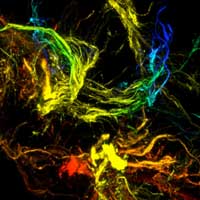 New research shows that unique materials with distinct properties akin to those of gecko feet can be created by harnessing liquid-driven chaos to produce soft polymer microparticles with hierarchical branching on the micro- and nanoscale.
New research shows that unique materials with distinct properties akin to those of gecko feet can be created by harnessing liquid-driven chaos to produce soft polymer microparticles with hierarchical branching on the micro- and nanoscale.
Overlap allows nanoparticles to enhance light-based detection
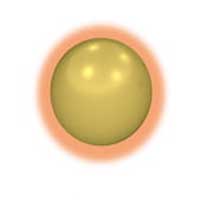 Scientists have found revealing information where light from a molecule meets light from a nanoparticle.
Scientists have found revealing information where light from a molecule meets light from a nanoparticle.
How to control friction in topological insulators
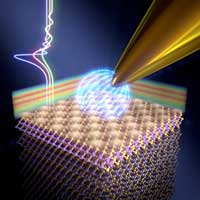 Physicists have begun investigating how topological insulators react to friction. Their experiment shows that the heat generated through friction is significantly lower than in conventional materials.
Physicists have begun investigating how topological insulators react to friction. Their experiment shows that the heat generated through friction is significantly lower than in conventional materials.
The nano-guitar string that plays itself
 Researchers have created a nano-electronic circuit which vibrates without any external force.
Researchers have created a nano-electronic circuit which vibrates without any external force.
Scientists reveal mechanism of electron charge exchange in molecules
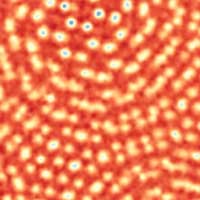 Breakthrough has applications in data storage, energy conversion, quantum computing.
Breakthrough has applications in data storage, energy conversion, quantum computing.
Protein-folded DNA nanostructures offer a new building material for biotechnology
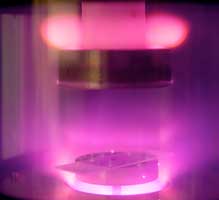 By using proteins that naturally bind and arrange DNA inside cells, scientists has devised a plug-and-play strategy for building stable, custom-designed nanostructures.
By using proteins that naturally bind and arrange DNA inside cells, scientists has devised a plug-and-play strategy for building stable, custom-designed nanostructures.
Surface smarts
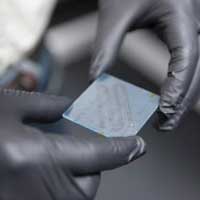 Nanostructures, microreactors, and printable electronics inspire many new applications in functional surfaces.
Nanostructures, microreactors, and printable electronics inspire many new applications in functional surfaces.
Super light dampers for low tones
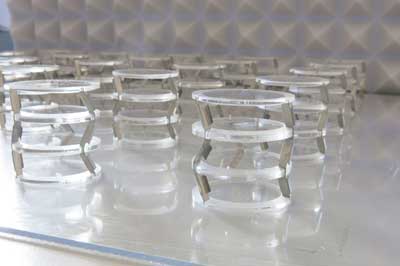 A team of Empa acoustic researchers has built macroscopic crystal structures that use internal rotation to attenuate the propagation of waves. The method makes it possible to build very light and stiff materials that can also 'swallow' low frequencies very well.
A team of Empa acoustic researchers has built macroscopic crystal structures that use internal rotation to attenuate the propagation of waves. The method makes it possible to build very light and stiff materials that can also 'swallow' low frequencies very well.
Controlling the charge state of organic molecule quantum dots in a 2-D nanoarray
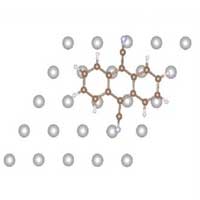 Molecular self-assembly on a metal results in high-density 2D organic (carbon-based) quantum dot array with electric-field-controllable charge state.
Molecular self-assembly on a metal results in high-density 2D organic (carbon-based) quantum dot array with electric-field-controllable charge state.
Subscribe to:
Comments (Atom)
